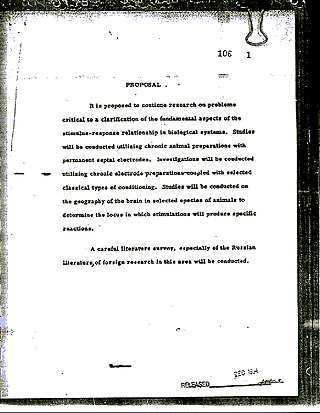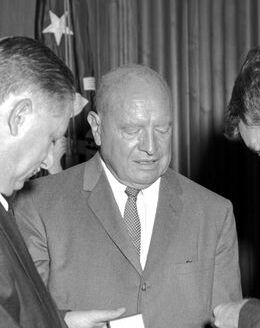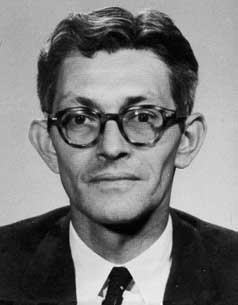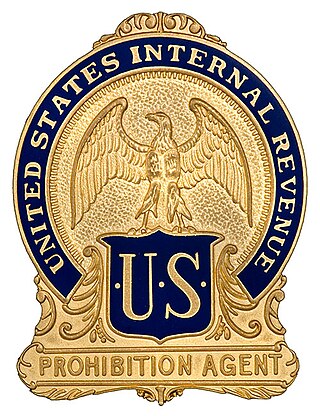
Project MKUltra was a human experimentation program designed and undertaken by the U.S. Central Intelligence Agency (CIA) to develop procedures and identify drugs that could be used during interrogations to weaken individuals and force confessions through brainwashing and psychological torture. The term MKUltra is a CIA cryptonym: "MK" is an arbitrary prefix standing for the Office of Technical Service and "Ultra" is an arbitrary word out of a dictionary to denominate this project. The program has been widely condemned as a violation of individual rights and an example of the CIA’s abuse of power, with critics highlighting its disregard for consent and its corrosive impact on democratic principles.

The Marihuana Tax Act of 1937, Pub. L. 75–238, 50 Stat. 551, enacted August 2, 1937, was a United States Act that placed a tax on the sale of cannabis. The H.R. 6385 act was drafted by Harry Anslinger and introduced by Rep. Robert L. Doughton of North Carolina, on April 14, 1937. The Seventy-fifth United States Congress held hearings on April 27, 28, 29th, 30th, and May 4, 1937. Upon the congressional hearings confirmation, the H.R. 6385 act was redrafted as H.R. 6906 and introduced with House Report 792. The Act is referred to, using the modern spelling, as the 1937 Marijuana Tax Act. It was overturned in 1969 in Leary v. United States, and was repealed by Congress the next year.

Charles "Lucky" Luciano was an Italian-born gangster who operated mainly in the United States. He started his criminal career in the Five Points Gang and was instrumental in the development of the National Crime Syndicate. Luciano is considered the father of the Italian-American Mafia for the establishment of the Commission in 1931, after he abolished the boss of bosses title held by Salvatore Maranzano following the Castellammarese War. He was also the first official boss of the modern Genovese crime family.

Harry Jacob Anslinger was an American government official who served as the first commissioner of the U.S. Treasury Department's Federal Bureau of Narcotics during the presidencies of Herbert Hoover, Franklin D. Roosevelt, Harry S. Truman, Dwight D. Eisenhower, and John F. Kennedy. He was a supporter of Prohibition, and of the criminalization of all drugs except for alcohol, - because supporting the prohibition against alcohol means he didn’t support the criminalization of alcohol - and spearheaded anti-drug policy campaigns.
Project Artichoke was a project developed and enacted by the United States Central Intelligence Agency (CIA) for the purpose of researching methods of interrogation. Project Artichoke was succeeded by Project MKUltra, which began in 1953.

James Jesus Angleton was an American intelligence operative who served as chief of the counterintelligence department of the Central Intelligence Agency from 1954 to 1975. According to Director of Central Intelligence Richard Helms, Angleton was "recognized as the dominant counterintelligence figure in the non-communist world".
The Havana Conference of 1946 was a historic meeting of United States Mafia and Cosa Nostra leaders in Havana, Cuba. Supposedly arranged by Charles "Lucky" Luciano, the conference was held to discuss important mob policies, rules, and business interests. The Havana Conference was attended by delegations representing crime families throughout the United States. The conference was held during the week of December 22, 1946, at the Hotel Nacional. The Havana Conference is considered to have been the most important mob summit since the Atlantic City Conference of 1929. Decisions made in Havana resonated throughout US crime families during the ensuing decades.

The Bureau of Prohibition was the United States federal law enforcement agency with the responsibility of investigating the possession, distribution, consumption, and trafficking of alcohol and alcoholic beverages in the United States of America during the Prohibition era. The enumerated enforcement powers of this organization were vested in the Volstead Act. Federal Prohibition Agents of the Bureau were commonly referred to by members of the public and the press of the day as "Prohis," or "Dry Agents." In the sparsely populated areas of the American west, agents were sometimes called "Prohibition Cowboys." At its peak, the Bureau employed 2,300 dry agents.

The Bureau of Narcotics and Dangerous Drugs (BNDD) was a federal law enforcement agency within the United States Department of Justice with the enumerated power of investigating the consumption, trafficking, and distribution of narcotics and dangerous drugs. BNDD is the direct predecessor of the modern Drug Enforcement Administration (DEA).

The Federal Bureau of Narcotics (FBN) was an agency of the United States Department of the Treasury, with the enumerated powers of pursuing crimes related to the possession, distribution, and trafficking of listed narcotics including cannabis, opium, cocaine, and their derivatives. Headquartered in Washington, D.C., the FBN carried out operations and missions around the world. The bureau was in existence from its establishment in 1930 until its dissolution in 1968. FBN is considered a predecessor to the Drug Enforcement Administration.

The Bureau of Drug Abuse Control (BDAC) was an American law enforcement agency that investigated the consumption, trafficking, and distribution of drugs and controlled substances. BDAC was a Bureau of the Food and Drug Administration (FDA). In the sum total of the two years that BDAC existed, it investigated and closed around 300 criminal cases, seized 43 clandestine drug laboratories, and made over 1,300 arrests.
Operation Midnight Climax was an operation carried out by the CIA as a sub-project of Project MKUltra, the mind-control research program that began in the 1950s. It was initially established in 1954 by Sidney Gottlieb and placed under the direction of the Federal Bureau of Narcotics in Boston, Massachusetts with the "Federal Narcotics Agent and CIA consultant" George Hunter White under the pseudonym of Morgan Hall. Dr. Sidney Gottlieb was a chemist who was chief of the Chemical Division of the Office of Technical Service of the CIA. Gottlieb based his plan for Project MKUltra and Operation Midnight Climax off interrogation method research under Project Artichoke. Unlike Project Artichoke, Operation Midnight Climax gave Gottlieb permission to test drugs on unknowing citizens, which made way for the legacy of this operation. Hundreds of federal agents, field operatives, and scientists worked on these programs before they were shut down in the 1960s.
The French Connection was a scheme through which heroin was smuggled from Indochina through Turkey to France and then to the United States and Canada. The operation started in the 1930s, reached its peak in the 1960s, and was dismantled in the 1970s. It was responsible for providing the vast majority of the heroin used in the United States at the time. The operation was headed by Corsicans Antoine Guérini and Paul Carbone. It also involved Auguste Ricord, Paul Mondoloni and Salvatore Greco.

Lucky Luciano is a 1973 biographical crime film about the Sicilian-American gangster Charles “Lucky” Luciano. It is directed by Francesco Rosi, and written by Rosi, Tonino Guerra, Lino Iannuzzi, and Jerome Chodorov. It stars Gian Maria Volonté as the title character, with Rod Steiger, Vincent Gardenia, Charles Cioffi, and Edmond O'Brien. Charles Siragusa, one of the real-life federal narcotics agents who pursued Luciano, plays himself in the film and also served as technical consultant. The film is an Italian and French co-production, filmed on-location in Italy and New York City.

Henry Luke Giordano was an American pharmacist and federal agent who served as the second and last Commissioner of the Federal Bureau of Narcotics (FBN), from 1962 to 1968.

George Hunter White was an American federal agent. He was a Federal Bureau of Narcotics (FBN) investigator, undercover Central Intelligence Agency (CIA) operative, World War II veteran, and one of the men responsible for the capture of Lucky Luciano.

Garland H. Williams (1903–1993) was an American pioneer of covert investigations, military counterintelligence, white collar investigations, espionage, training and planning, and a lifelong law enforcement officer. He is a veteran of World War II and the Korean War. During World War II, Williams was integral in the training of thousands of American hopeful would-be undercover operatives and guerrilla fighters in both the Military Intelligence Division and the Office of Strategic Services.

Jaques Voignier, also known as Jean Pierre LaFitte, was a prolific French and American criminal and confidential informant, eventually operating as an undercover spy for the American Federal Bureau of Narcotics (FBN) in the pursuit of criminal narcotics and mafia organizations around the world. He also worked for the Federal Bureau of Investigation (FBI) to track and hunt down white collar criminals and art thieves. Notoriously, Voignier used the connections he made as an undercover operative to participate in the criminal underworld while also investigating it - but some historians suggest this was part of a deception invented by the FBI in 1951. Controversially, Voignier was also involved in the MKUltra experiments, and was one of the two men in the room with Frank Olson on the night that Olson died.

Johnathan (Jack) E. Ingersoll was an American police officer and federal law enforcement agent. He was the first Chief of Police in Charlotte, North Carolina to use computers on the job. Ingersoll was the only Director of the Bureau of Narcotics and Dangerous Drugs (BNDD), and resigned amid the Watergate scandal. The BNDD was merged into the Drug Enforcement Administration two days after he departed from the government.

Manuel Benítez y Valdés was the Chief of the national police of the Republic of Cuba under President Fulgencio Batista. He has been described as a "...rough, tough General..." He would often carry out Batista's orders with ruthless efficiency. Cuban historian Abel Rojas Barallobre writes that he is "...one of the most nefarious men in the history of Cuba."

















